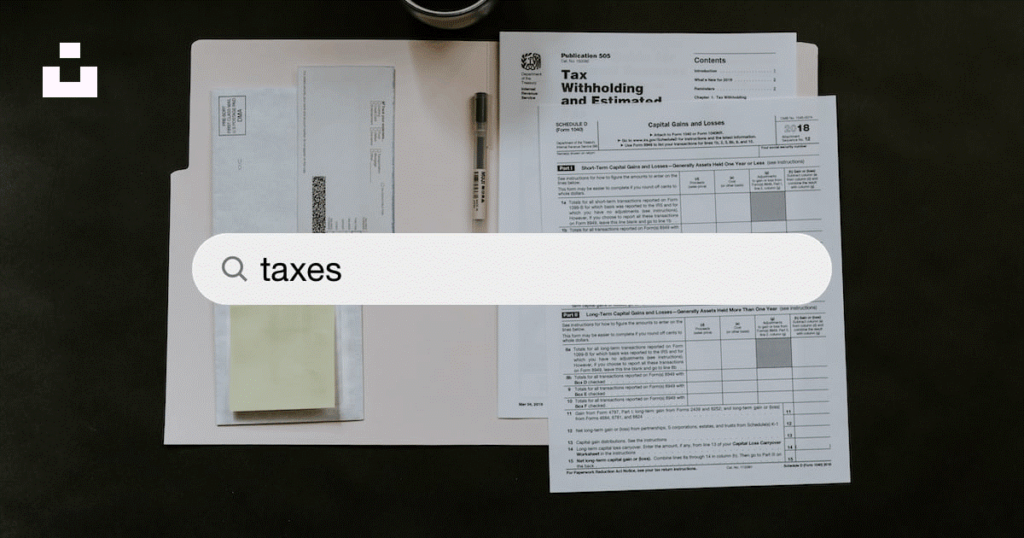The Capital Gain Account Scheme is a popular tax planning tool that allows individuals to park their capital gains until they can reinvest them in certain specified assets, as per the Income Tax Act, 1961. The scheme was introduced by the India government in 1988 to encourage the reinvestment of capital gains in specified assets by providing tax benefits.
In this article, we will provide you with a comprehensive guide to the Capital Gain Account Scheme, including who can deposit, when to deposit, where to open an account, the types of deposits available, how to withdraw, and the tax implications of the scheme.
The Capital Gains Account Scheme (CGAS) is a government initiative that provides tax relief to individuals who reinvest their capital gains within a specific time frame. This scheme allows taxpayers to securely hold their capital gains until they are ready to be reinvested.
What is Capital Gain Account Scheme?
CGAS enables individuals to protect their long-term capital gains until they can invest them as specified in Sections 54 and 54F of the tax code.
Under Section 54, individuals can invest their long-term capital gains from the sale of an immovable property into a residential property. Section 54F allows individuals to invest their long-term capital gains from the sale of shares and bonds into a residential property.
To be eligible for a CGAS account, you must be unable to invest your capital gains in a house before the due date for filing your income tax return, which is typically July 31 after the assessment year. This scheme was introduced in 1988 and can be accessed through any of the 28 banks notified by the government, including the State Bank of India, Syndicate Bank, Central Bank of India, IDBI Bank, Bank of Baroda, and Corporation Bank. However, please note that CGAS facilities are not available in the rural branches of these banks.
To File Your Income tax Return
Who can deposit in the Capital Gain Account Scheme?
As per the Income Tax Act, 1961, there are different categories of taxpayers who can avail of the benefits of the Capital Gain Account Scheme. These include:
- HUF or Individual: Sale of a residential house (Section 54)
- Any taxpayer: Compulsory acquisition of building and land (Section 54D)
- HUF or Individual: Sale of land used for agriculture (Section 54B)
- Any taxpayer: Sale of any long-term capital asset (Section 54E)
- HUF or Individual: Sale of a long-term capital asset that is not a residential property (Section 54F)
- Any taxpayer: Sale of long-term capital assets, including building, land, or both (Section 54EC)
- Any taxpayer: Transfer of assets, such as plant, building, land, machinery, right in building or land, when shifting an industrial undertaking from an urban area (Section 54G)
- Any taxpayer: Residential property transfer (Section 54GA)
- Any taxpayer: Transfer of assets, such as plant, building, land, machinery, right in building or land, when shifting an industrial undertaking from an urban area to a Special Economic Zone (SEZ) (Section 54GB)
When can you deposit in the Capital Gain Account Scheme?
You can deposit your capital gains in the Capital Gain Account Scheme when you are unable to reinvest them in a specified investment asset before the stipulated time limit expires for that specific investment and before the due date of filing income tax returns.
Where can you open a Capital Gain Account?
You can open a Capital Gain Account in any branch of the authorised banks, except for their branches in rural areas.
How to Open a CGAS Account?
To open a capital gains account, you need to complete Form A and submit it along with a copy of your PAN card, proof of address, and a photograph. Funding the account can be done through demand drafts, cash deposits, or checks, and you also have the option to deposit the money in installments. If you deposit funds using a demand draft or check, the deposit date will be determined by the date the check or demand draft is cashed. Additionally, if you wish to invest in both real estate and government bonds under different parts of the Income Tax Act, you must open separate CGAS accounts.
Saving on Long-Term Capital Gains Tax with CGAS
Under the Income Tax Act, you can save on capital gains tax by investing your entire capital gains in a residential property under Sections 54 and 54F, or by investing in capital gains bonds under Section 54EC. These investments must be made within one year before the sale of the property or within two years of the transaction.
However, if you are unable to invest your entire long-term capital gains in a residential property before the deadline to file your income tax return approaches, you can open a CGAS account with a scheduled bank. This account allows you to withdraw the funds at any time for the purpose of purchasing or constructing a house, thereby helping you save on long-term capital gains tax.
How Many Types of CGAS Account?
CGAS accounts come in two categories: Savings and Term Deposit.
- CGAS Type A – Savings Account: A capital gains savings account functions similarly to a regular savings account in any bank. The applicable interest rate is the same as that given on regular savings schemes. You will receive a passbook that records all transactions, including deposits, interest received, and withdrawals. The funds deposited in this account have high liquidity and can be withdrawn at any time.
- CGAS Type B – Term Deposit Account: A capital gains term deposit account operates similarly to fixed deposit schemes offered by banks. The interest rate and terms for withdrawal before maturity are the same as those for regular fixed deposit schemes. If you withdraw funds from this account before the maturity date, you may incur a premature withdrawal penalty, depending on the bank’s terms. You will receive a deposit receipt specifying the principal deposited, date of deposit, date of maturity, and the interest rate. This account offers both cumulative and non-cumulative options. In the cumulative option, the interest amount is added to the term deposit and reinvested, increasing the total interest accrued. The non-cumulative scheme allows you to withdraw or receive interest at regular intervals, such as quarterly, half-yearly, or annually.
The maximum tenure for a Type B account is 36 months (3 years) for constructing a house and 24 months (2 years) for purchasing a ready-to-move-in house. It is recommended to opt for a capital gains term deposit account only if you have a lump sum of capital gains. You can choose a term deposit scheme for a period of less than 2 years to ensure you make the required investment within the given timeframe and benefit from the interest accrued on the term deposit.
A capital gains savings account is more suitable if you receive the amount in installments or need to withdraw funds gradually, such as in the case of constructing a house.
It’s important to note that the interest generated through these accounts is subject to TDS (Tax Deducted at Source) as per the Income Tax rules. CGAS accounts do not provide a cheque book or debit card, and withdrawals can only be made through Forms C and D.
How to Withdrawing a money from a CGAS Account
Form C: To withdraw funds from a CGAS account, you need to submit an application through Form C. Once the withdrawal is made, you must utilize the funds within 60 days, and immediate redeposit into the account is not allowed. If a second withdrawal is required, you need to submit another application through Form C.
Form D: Transferring the account from one branch of the bank to another is allowed, but transferring the account between different banks is not permitted. You can also change the nature of your account in whole or in part, such as switching between a savings account and a term deposit account. However, if you transfer the account from a term deposit to a savings account before the maturity period ends, it will be considered a premature withdrawal, and penalties will apply accordingly.
Form E: A CGAS account can only be opened by individuals and Hindu United Families (HUF). It is not possible to take a loan based on this account. If you wish to nominate someone to inherit the funds in the event of your death, you can do so by submitting Form E. Any changes to the nominee can be made using Form F.
Form F: To close the account, you need approval from the Income Tax Officer in your jurisdiction. It’s crucial to utilize the deposited amount in the capital gains account within 2 years of the property sale to avail the benefits under Sections 54, 54EC, and 54F. Failure to do so will subject the unutilized amount to capital gains tax in the fiscal year in which the deadline expires.
Withdrawal from a Capital Gains Account
Individuals with a Type A capital gains account can withdraw funds without any restrictions. However, individuals with a Type B capital gains account can only make a premature withdrawal if they transfer their funds to a Type A account first. Any withdrawal must be used for the specified investment within 60 days, and any unused funds may be immediately redeposited into a Type A account.
Key Points to Remember
Here are a few important points to keep in mind regarding the Capital Gains Account Scheme (CGAS):
- Transferring funds from a Type B account to a Type A account before the maturity period is considered a premature withdrawal, even if the deposit types are changed (e.g., from savings to term deposits or vice versa). Transfers between branches of the same bank are permitted, but transfers between different banks are not allowed.
- Form E should be submitted to nominate someone to inherit the account in the event of the depositor’s death, while Form F is used to modify the nominee.
- Both types of accounts require approval from the jurisdictional
Tax Benefits of Capital Gain Account Scheme
When filing your returns, it is mandatory to attach the deposit proof to be exempted. The Capital Gain Account Scheme provides tax benefits to individuals who are unable to reinvest their capital gains in specified assets within the stipulated time frame. The scheme allows individuals to deposit their capital gains in the scheme until they can be reinvested, protecting their long-term capital gains.
Tax on Capital Gain
The tax on capital gain is calculated based on the type of asset sold, the holding period of the asset, and the tax bracket the individual falls under. Long-term capital gains attract a lower tax rate than short-term capital gains. If you sell a capital asset after holding it for more than 24 months, it is considered a long-term capital asset. If you sell a capital asset before holding it for 24 months, it is considered a short-term capital asset.
Conclusion
The Capital Gain Account Scheme is an excellent tax planning tool that allows individuals to park their capital gains until they can be reinvested in specified assets, as per the Income Tax Act, 1961. The scheme provides tax benefits to individuals who are unable to reinvest their capital gains within the stipulated time frame. It is important to understand the terms and conditions of the scheme before opening an account to ensure that you avail of the benefits to the fullest.


